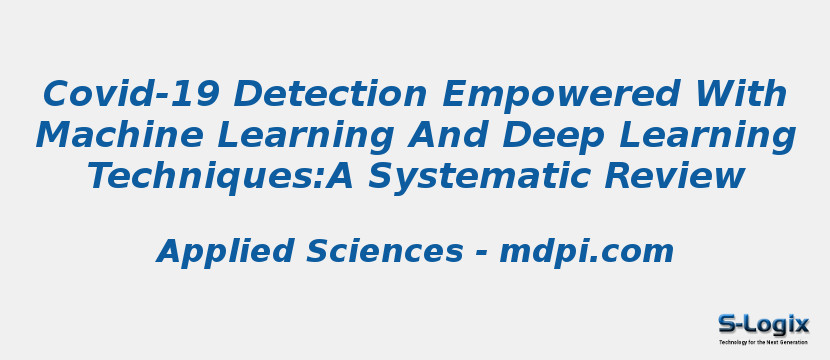Research Area: Machine Learning
COVID-19 has infected 223 countries and caused 2.8 million deaths worldwide (at the time of writing this article), and the death rate is increasing continuously. Early diagnosis of COVID patients is a critical challenge for medical practitioners, governments, organizations, and countries to overcome the rapid spread of the deadly virus in any geographical area. In this situation, the previous epidemic evidence on Machine Learning (ML) and Deep Learning (DL) techniques encouraged the researchers to play a significant role in detecting COVID-19. Similarly, the rising scope of ML/DL methodologies in the medical domain also advocates its significant role in COVID-19 detection. This systematic review presents ML and DL techniques practiced in this era to predict, diagnose, classify, and detect the coronavirus. In this study, the data was retrieved from three prevalent full-text archives, i.e., Science Direct, Web of Science, and PubMed, using the search code strategy on 16 March 2021. Using professional assessment, among 961 articles retrieved by an initial query, only 40 articles focusing on ML/DL-based COVID-19 detection schemes were selected. Findings have been presented as a country-wise distribution of publications, article frequency, various data collection, analyzed datasets, sample sizes, and applied ML/DL techniques. Precisely, this study reveals that ML/DL technique accuracy lay between 80% to 100% when detecting COVID-19. The RT-PCR-based model with Support Vector Machine (SVM) exhibited the lowest accuracy (80%), whereas the X-ray-based model achieved the highest accuracy (99.7%) using a deep convolutional neural network. However, current studies have shown that an anal swab test is super accurate to detect the virus. Moreover, this review addresses the limitations of COVID-19 detection along with the detailed discussion of the prevailing challenges and future research directions, which eventually highlight outstanding issues.
Keywords:
Covid-19 Detection
Machine Learning
Deep Learning
Early diagnosis
Author(s) Name: Amir Rehman,Muhammad Azhar Iqbal,Huanlai Xing and Irfan Ahmed
Journal name: Applied Sciences
Conferrence name:
Publisher name: MDPI
DOI: 10.3390/app11083414
Volume Information: Volume 11, Issue 8
Paper Link: https://www.mdpi.com/2076-3417/11/8/3414
